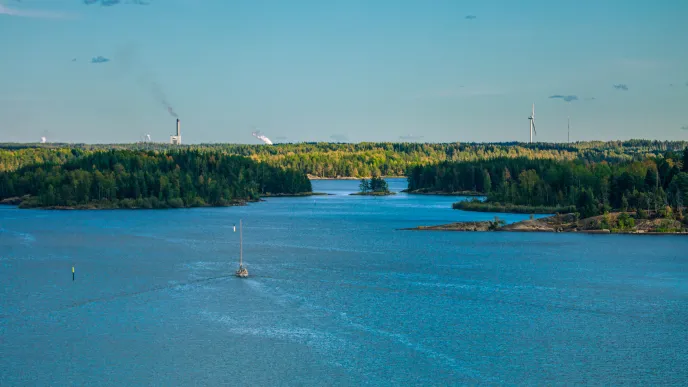Terms related to sustainability are no longer used only by researchers; they have found their way into everyday use. If you are unfamiliar with sustainability terminology or need a refresher, continue reading. In addition to learning the key terms, you will gain a better understanding of some of the major challenges we face today, such as tackling climate change, ensuring the protection of plant and animal diversity, and using water sustainably.
Biodiversity impact – measuring the multitudes of life
Biodiversity refers to the diversity of all species and living organisms in a specific ecosystem. Assessing biodiversity impact examines how human activities – such as changes in land use, climate change, water usage, and pollution – affect the species diversity of ecosystems. According to Natasha Järviö, Postdoctoral Researcher at LUT University's life cycle management group specialising in the sustainability of food systems, biodiversity impact assessment is particularly important for food production, which requires large land areas and directly affects ecosystems.
“Unlike focusing solely on carbon emissions, biodiversity impact assessment looks at environmental impacts from a broader perspective and includes other biodiversity loss drivers, such as land use. This allows us to gain a more comprehensive understanding of how we can improve the species diversity of ecosystems, and with that, protect our livelihoods.”
LUT University is actively developing new methods for biodiversity impact assessment. Ville Uusitalo, Professor of Sustainability Science at LUT School of Energy Systems, cites as an example the Biodiful research project which aims to use environmental DNA analysis to develop more accurate measurement methods that can provide more detailed information on species changes in areas affected by agriculture and energy production.
"Methodologies are constantly evolving and are already helping us to understand how different sectors, such as food production and construction, can reduce their impact on biodiversity. It is crucial to develop solutions that help us to combat both climate change and biodiversity loss.”


Carbon footprint – measuring greenhouse gases
The carbon footprint measures the greenhouse gas emissions generated during the life cycle of a product or activity.
Carbon footprint is one of the key indicators in the fight against climate change and provides a clear way to understand how much carbon dioxide and other greenhouse gases are released into the atmosphere during various processes.
Calculating a company’s carbon footprint allows various industries to understand how their production processes affect the climate. According to Risto Soukka, Professor of Sustainability Science at LUT School of Energy Systems, LUT has been researching life cycle assessments (LCA) for decades to evaluate environmental impacts.
“Nowadays, there is a growing demand for companies to take sustainable actions by contributing to emission reductions and carbon neutrality goals. Life-cycle modelling can be used to estimate how much emissions are generated through the manufacturing, use, and disposal of different products. This helps companies create more sustainable processes and solutions.”
Carbon handprint – positive impact on climate
A carbon handprint shows the extent to which a company or its products and services can help other operators reduce their carbon footprint. It measures the positive climate impacts that can be achieved for example by replacing an old product or service with a new one. In other words, the carbon handprint quantifies the positive climate impact achieved through energy efficiency improvements or circular economy solutions, for instance.
"Companies are increasingly interested in how much they are helping others reduce emissions through their own solutions. In technology development projects, for example, carbon handprint assessment is an important part of the planning process, as it helps to identify markets where the greatest benefits can be achieved,” Soukka explains.
The carbon footprint is also assessed at a national level. According to Soukka, Finland has the potential to market itself internationally as a significant player in the field of sustainable solutions.
"We could position ourselves globally as a provider of climate solutions, helping other countries reduce their carbon footprint. Finland is well-equipped for this, as we have a good supply of low-emission electricity, energy-efficient processes, and necessary expertise."


Water footprint – measuring water usage
The water footprint measures the total water used throughout the life cycle of a product or service. This concept is particularly important in the energy sector, where significant amounts of water are used for cooling thermal power plants and cleaning solar panels, among other uses.
The dissertation of Alena Lohrmann at LUT investigated the water footprint of the energy sector and emphasized the importance of reducing water consumption, especially in thermal power plants. According to her research, switching to renewable energy sources such as wind and solar power can save significant amounts of water – a critical consideration as climate change makes water supplies increasingly uncertain.
Managing the water footprint is an essential part of a sustainable energy future. Lohrmann's studies demonstrate transitioning to renewable energy can reduce the energy sector's water dependency by up to 98 per cent by phasing out old thermal power plants and introducing renewable energy sources.
More information

Ville Uusitalo

Natasha Järviö






